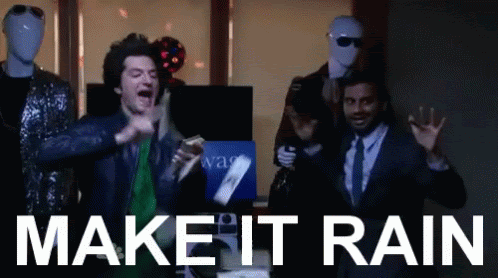Those of you who read my last newsletter know that every suspected outcome I proposed for the post-election market was dead wrong.
Expecting markets to decline due to a delayed election decision, the markets instead jettisoned nearly 4% while the nation paid more attention than it ever imagined possible to the state of Pennsylvania.
I suspect an elaborate ploy by the residents of Pennsylvania to force the country into noticing them.
And then, on news of Joe Biden winning the election and progress with an emergency Coronavirus vaccine, the market screamed another 4% higher, where I predicted moderate to insubstantial growth.
You might think, “Wow, hope this dunce is done trying to predict things.”
Bad news - I’m not. And this time, I’ve got a lauded economist to back me up.
Stephen Roach
Despite his last name and an unfortunate resemblance to a nuclear bomb-battered version of said namesake, Stephen Roach is a smart cookie.
A senior fellow at Yale University and former chairman of Morgan Stanley Asia, Mr. Roach has written extensively on what he believes to be an impending crash of the U.S. Dollar.
In late September, he published an editorial piece defending his position. The original article can be found here.
“The US dollar slide has entered the early stages of what looks to be a sharp descent, having already fallen by 4.3 percent in the four months ending in August in terms of its real effective exchange rate – the index that matters the most for trade, competitiveness, inflation and monetary policy.”
USD Effective Exchange Rate
The effective exchange rate index describes the strength of one currency relative to a basket of other currencies. Comparing the currency to a spread of other currencies gives a weighted average to achieve a normalized value, which couldn’t be found by conducting a 1-1 comparison.
A decline of 4.3% is significant. If the USD declines 4.3% relative to the Euro, your American dollars have 4.3% less buying power in Europe, effectively making goods and services 7% more expensive there.
This affects our ability to trade and therefore our competitive standing in the world, and can often create a damaging cycle that drags the dollar continually lower.
Factors of Decline
Roach predicts this decline will spiral downward to a 35% degradation of the USD, and predicates it on three factors.
The national net savings rate has gone negative for the first time in over a decade.
A collapse in the US current-account deficit.
Rising inflation on the back of future stimulus packages.
The National Net Savings Rate
The national net savings rate is the sum of savings between businesses, households, and the government sector in the US.
Little to no savings implies a period of increased expenditures and decreased income. Most recently, the Central Bank printed $3 trillion, and some 20 million Americans were unemployed, drastically reducing incomes.
As you can see in the graph above, the national net savings rate dipped negative for the first time since the financial crisis.
To finance continued consumption and growth, the US will borrow surplus savings from abroad to compensate for the domestic shortfall. This borrowing continues a large balance of payments deficit and further increases the trade deficit, weakening the USD comparatively.
A Collapse in the US Current Account Deficit
The current account deficit reflects the combined balances on trades in goods and services and income flows between US residents and residents of other countries. This deficit widened by 52.9% in the second quarter of 2020, from $59 billion to $170.5 billion.
Deficits in trade and US income cause the dollar to decrease in demand and value. This widening of the current account deficit is representative of an expanding lack of goods and reduced surpluses on primary incomes and services.
Inflation
In a previous newsletter I described how the stimulus package had not created an inflationary market due to the widespread deflation of the American economy to that point. Another stimulus package, however, would likely add $3 trillion more into the economy, effectively creating 15-20% of normal US GDP out of thin air.
Inflation causes currency devaluation, since the buying power of your currency is subsequently reduced. Typically, the Central Bank will increase interest rates to combat inflation, but recent guidance reveals this sort of thing won’t be happening.
An article from MarketWatch tells how the Fed doesn’t expect to hike interest rates until 2024. Interest rates have been kept low to make debt inexpensive and inject liquidity into the market, but if not balanced correctly, will allow for rampant inflation.
What to Expect
Like any macroeconomic event we’ve ever discussed, we’ve seen rampant inflation before. The post-war period of 1965-1982 is known as “The Great Inflation”, and saw interest rates rise as high as 14%.
This period was set in motion by Nixon’s temporary removal of the dollar from the gold standard, which turned out to be permanent. Left without a solid backing, the USD flapped around and bounced through years of devaluations and economic recessions.
The Great Inflation came to define American monetary policy as we know it. While we are better equipped through knowledge of the past to deal with another period of inflation, expect continued volatility.
Unemployment rates may spike, recession may deepen, the stock market may finally taste reality, but it will be temporary.
As always, I recommend learning the lessons of the past to advise the present, and we’ll do plenty more of that in the coming weeks.
Thanks for reading :)
If you found this at all helpful, interesting, informative, or even a little entertaining, share it with a friend! Gaining an audience in the vast sea of the internet is tough - any support is highly valued!







